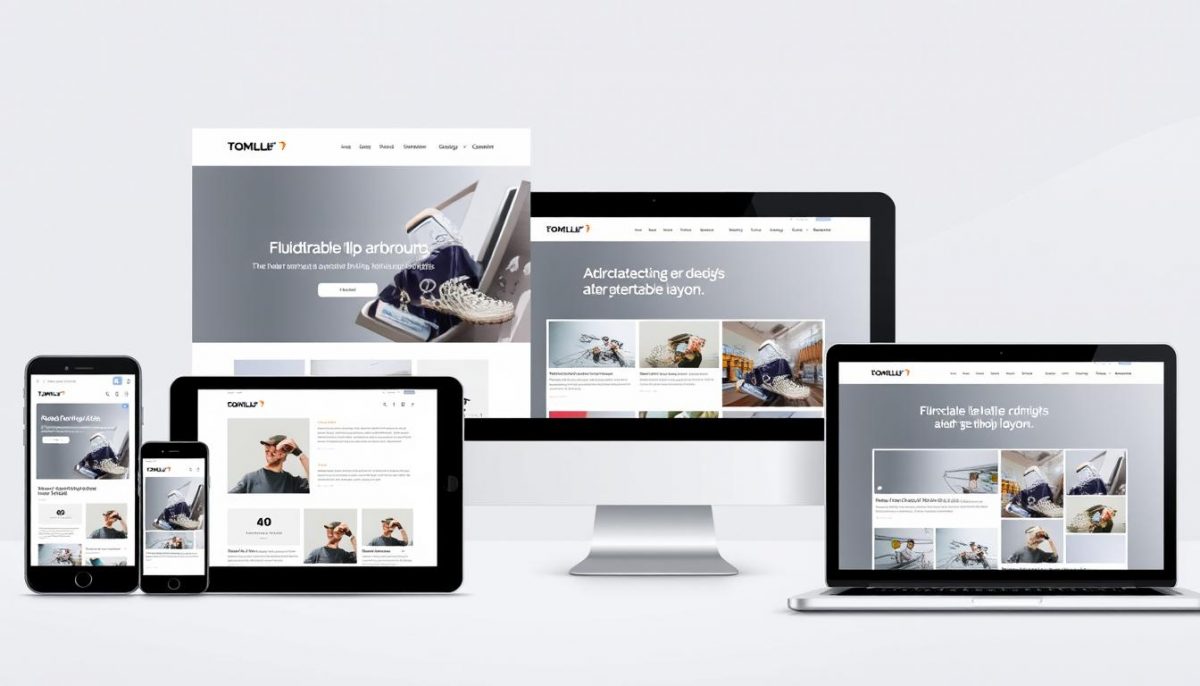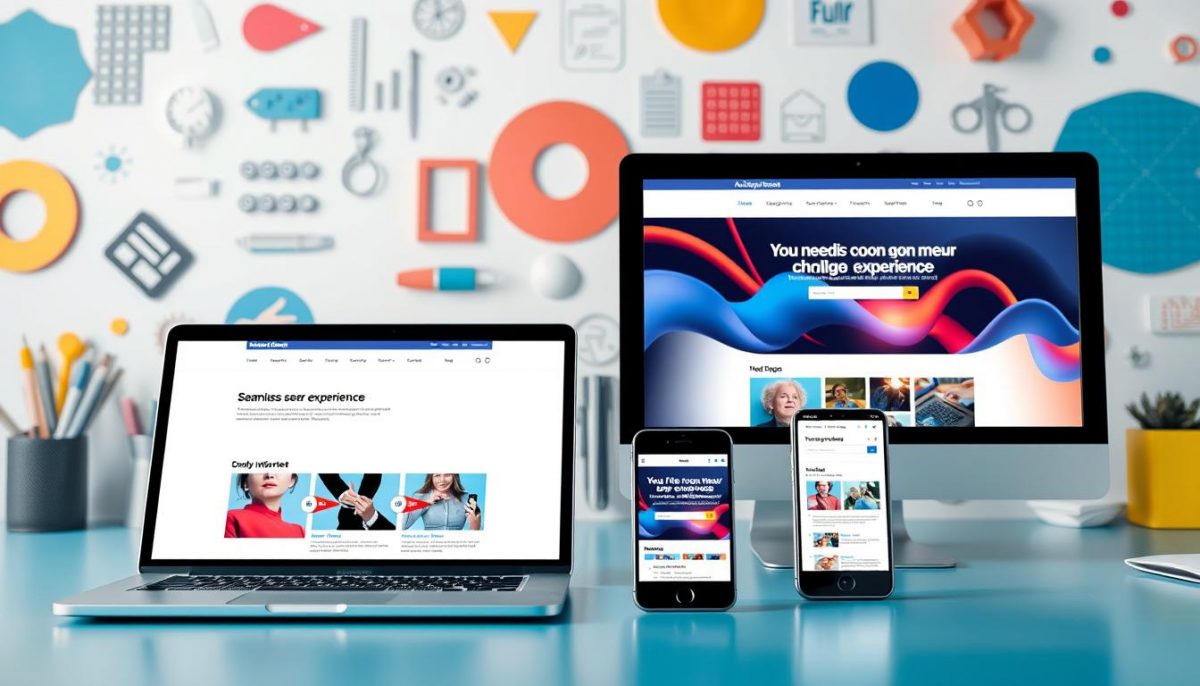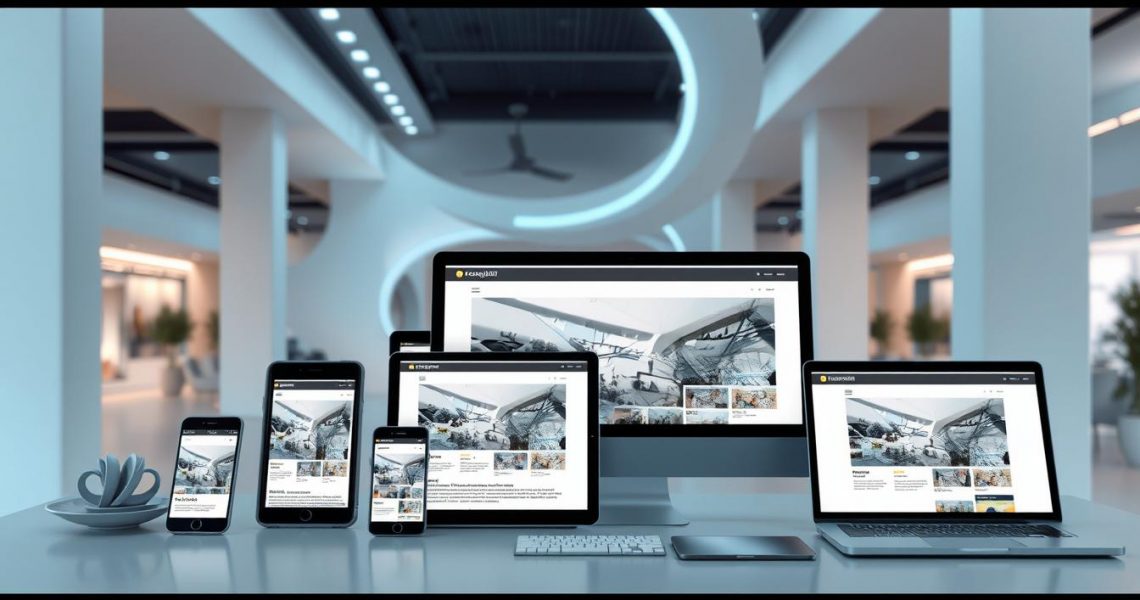The Importance of Responsive Design in 2024
8 November 2024In 2024, knowing how crucial responsive design is has become even more important. More and more people use different devices to browse the web. They expect a smooth experience, no matter if they’re on a phone, tablet, or computer.
Responsive design is not just a trend. It’s a key approach that makes sure everyone has a great experience online. It’s about making websites work well on all devices.
Businesses and web designers must focus on responsive design to stay ahead in 2024. By doing so, they improve how websites are used and gain an edge in the digital world. Responsive design makes websites flexible, offering a smooth experience for all users.
Understanding Responsive Design and Its Significance
Responsive design is key in web development. It makes sure websites look good on all devices. This means easy reading and navigation, without needing to resize or scroll a lot.
Developers use fluid grids, flexible images, and media queries to make this happen. These tools help designs adjust to different screen sizes and shapes.
What is Responsive Design?
Responsive design aims to make websites work well on many devices. It considers various screen sizes and how they are held. This approach uses fluid grids and flexible images to adapt.
Media queries also play a big role. They let developers set styles for different devices. This ensures a smooth experience for users.
Why Responsive Design Matters
Responsive design is vital today. With more people using mobile internet, websites need to be mobile-friendly. This boosts User Engagement.
Studies show that users prefer mobile-optimized sites. They stay longer, which is good for businesses. Fast loading times also improve user experience. Many companies have seen great results by adopting responsive design.

The Importance of Responsive Design in 2024
Responsive design is key to better User Experience on different devices. As people move from desktops to mobiles, making sites work on all devices is crucial. By focusing on Responsive Web Design Benefits, businesses can make a site that works well on any device.
Enhancing User Experience Across Devices
A consistent interface builds trust and satisfaction. Nielsen Norman Group found users like sites that work well on all devices. Responsive design makes sites easier to use, improving User Experience.
Big retail brands show how adapting to mobile use boosts customer loyalty and sales.
Adapting to Changing User Behavior
Changing how people use the web affects web design. More people shop on mobiles, making mobile-friendly sites essential. A Pew Research Center report stresses the need for businesses to update their web design strategies.
Using tools like Google Analytics helps businesses understand what users want. By being proactive, they can engage users better and make the most of responsive design.

Key Benefits of Implementing Responsive Design
Responsive design brings many benefits, especially in boosting your website’s SEO rankings. Search engines like Google favor websites that work well on mobile devices. This makes responsive design key for better Google rankings.
Mobile-friendly sites tend to have lower bounce rates. This tells search engines that the site is relevant and easy to use. Expert opinions support this, highlighting the SEO perks of responsive design.
Improved SEO Rankings
Responsive design boosts your website’s ranking in search engines. Google prefers responsive web design over separate mobile and desktop sites. This makes your SEO efforts more effective.
By offering a consistent user experience on all devices, you improve engagement. This also boosts your site’s credibility with search engines. Such benefits make responsive design a smart choice for any digital strategy aiming for top rankings.
Cost-Effective Development
Responsive design is also cost-effective. Choosing a single adaptable website saves money compared to managing multiple versions. Many companies have moved from separate mobile sites to a unified responsive platform.
This approach reduces development and maintenance costs. It also makes updates and content delivery easier. Saving money and streamlining operations are key benefits.
Future-Proofing Your Website
Responsive design is a forward-thinking choice for web design. It prepares you for new technologies and devices, like IoT gadgets. As digital trends change, responsive design keeps you ahead.
Industry forecasts show a constantly evolving digital landscape. Those who focus on future-proofing with responsive design will stay relevant. This ensures your site remains user-friendly and adaptable as technology advances.

